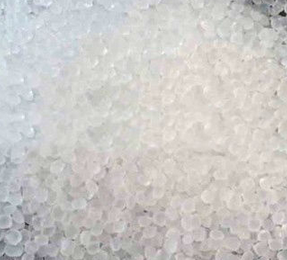So often people are looking for a "Visqueen" vapor barrier. What they are really asking for is some sort of plastic sheeting to use as a vapor barrier/retarder to slow water from coming up through the slab. The term "Visqueen" is actually a brand of plastic sheeting just like "Kleenex" is a brand of tissue. People will ask for a "Kleenex" when really they want a tissue. The same goes for "Visqueen". It is a brand.
Why are vapor barriers used under concrete you ask...Moisture that is in the ground slowly rises to the surface. This is problematic if you are putting tile or carpeting on top of the concrete in the way of flooring. Vapor barriers AKA vapor retarders are a sheet of plastic that blocks the water from reaching the concrete slab. The key to selecting a vapor barrier is understanding the function of a well made vapor barrier. A vapor barrier designed specifically to slow moisture or act as a barrier from water rising up has to meet the ASTM E 1745 "Standard Specification for Plastic Water Vapor Retarders Used in Contact with Soil or Granular Fill Under Concrete Slabs" testing specifications. This test measures how pourous the plastic sheeting/ vapor barrier material is. "Visqueen" type plastic as of this writing has not been tested to the specs that insure you can depend on the vapor barrier to slow water transmission.
"Visqueen" is also referred to as a "Construction and Agricultural" film C&A film. It may contain up to 25% post consumer recycled content, and is made from the least expensive resins available at any given time. While it is excellent for use in many projects, it is not ideal for any use that requires sustained strength such as a tarp or for use as a vapor/moisture barrier or retarder. People will often do a search for "visqueen vapor retarder", or fire retardant visqueen" when they may be looking for an engineered plastic. An engineered plastic is one that is intentionally designed to meet certain measurable criteria to insure its suitability for the job it is intended for.
When looking for a vapor retarder/barrier, we recommend an engineered film. C&A films often completely breaks down within a couple of years. Have you ever dug up some old black plastic? Remember how torn and crusty it was? It's important that today's vapor/moisture barriers or retarders should pass the ASTM E 96 Class A, B and C (standard for under-slab vapor retarders in contact with soil or granular fill). ASTM E 96 measures in part the "permeance" or how much water can pass through the vapor barrier. You need a liner that is 0.3 perms or less. In terms of thickness, 10 mils and above will offer much better protection and resistance to moisture transmission. If you need to over-lap the vapor retarder, 6 inches at the seams, taped and sealed around column and the like.
The bottom line is doing your due diligence regarding vapor barriers and selecting one that is not a "visqueen vapor barrier" and go with liner that is engineered and tested to do the best job for the application. The last thing you want is to notice your carpeting is moist, or the laminent is coming un-glued from the floor!







